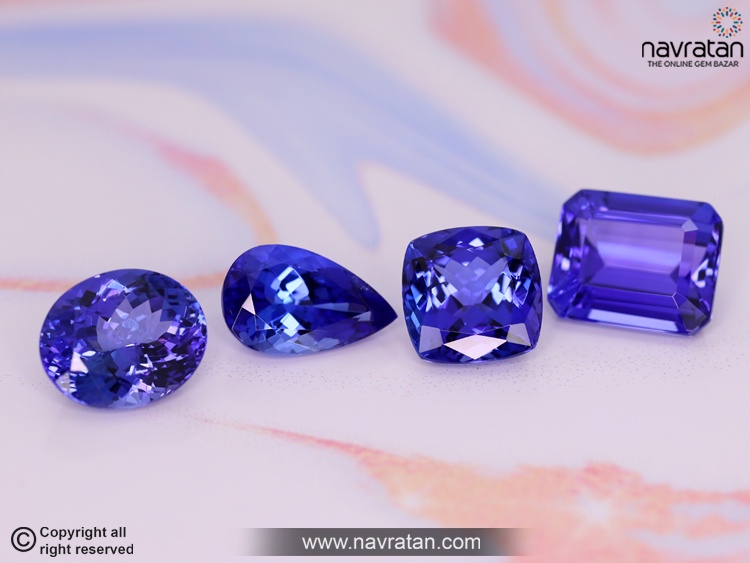Introduction
Welcome to the spellbinding journey through Tanzanite's captivating history and mysterious allure. This rare and stunning gemstone has an origin story that is as fascinating as the gemstone itself. From its serendipitous discovery in the foothills of Mount Kilimanjaro to its rise as a coveted gemstone in the world of jewelry, Tanzanite has an aura of mystique that continues to bewitch gem enthusiasts around the globe.
So, fasten your seatbelts and join us as we embark on an adventure to unravel the enigma that is Tanzanite. From its origins in the African wilderness to its place in modern jewelry, we will delve into its history, properties, folklore, and more in a quest to understand the allure and mystery of this extraordinary gemstone.
The Serendipitous Discovery of Tanzanite
Tanzanite's origin story is as serendipitous as it is intriguing. In 1967, a Maasai tribesman stumbled upon a cluster of striking blue crystals on the foothills of Mount Kilimanjaro in Tanzania, East Africa. Little did he know that his discovery would lead to the unearthing of one of the most remarkable gemstones in the world.
The breathtaking blue crystals were soon identified as a new gemstone variety, which was named "Tanzanite" in honor of its country of origin. The news of this discovery spread like wildfire, and gem enthusiasts and collectors were captivated by the mesmerizing beauty of this enigmatic gemstone.
The Origins and Properties of Tanzanite
Tanzanite's unique geological formation and properties make it an exceptionally rare and precious gemstone. Tanzanite is a variety of mineral zoisite and is formed from calcium, aluminum, and silicate minerals that crystallize in the presence of vanadium. What makes Tanzanite truly remarkable is that it is found in only one location on Earth - the Merelani Hills in northern Tanzania, making it an exclusive and highly sought-after gemstone.
Tanzanite is renowned for its mesmerizing color-changing ability, known as pleochroism. In natural daylight, Tanzanite displays a captivating blue hue with hints of violet, while under incandescent light, it exhibits a stunning violetish-blue or even reddish-purple color. This unique color-changing property adds to the mystique and allure of Tanzanite, making it a prized gemstone among collectors and connoisseurs.
Tanzanite's colors are further enhanced by its clarity, which is generally transparent to translucent. However, Tanzanite can sometimes exhibit natural inclusions or "silk," which can create a unique phenomenon called "Tanzanite's Silk." This silky appearance adds to the gemstone's allure and is considered a distinctive feature by many collectors.
The Folklore and Legends Surrounding Tanzanite
Tanzanite has captivated the imagination of many cultures and has been associated with various folklore and legends. The Maasai tribespeople, who inhabit the region where Tanzanite was discovered, believed that the gemstone possessed mystical powers and brought good fortune and prosperity to its wearer.
In modern metaphysical beliefs, Tanzanite is considered a stone of transformation, helping to enhance intuition, raise consciousness, and facilitate communication with the spiritual realm. It is also believed to promote self-discovery, increase creativity, and bring balance and harmony to the mind, body, and soul.
Tanzanite in Modern Jewelry
Since its discovery, Tanzanite has gained worldwide recognition as a unique and precious gemstone, and it has become a highly sought-after gemstone in the world of jewelry. Its vivid blue and violetish-blue hues, coupled with its rarity and mystique, make it a prized gemstone for collectors and jewelry enthusiasts alike.
Tanzanite is often used in a variety of jewelry styles, including rings, earrings, pendants, and bracelets. Its remarkable color-changing ability makes it a versatile gemstone that can complement both casual and formal attire. Tanzanite is often paired with diamonds or other gemstones to create breathtaking and unique jewelry pieces that exude elegance and sophistication.
Caring for Tanzanite - Tips and Precautions
Like all gemstones, Tanzanite requires proper care and maintenance to preserve its beauty and longevity. Here are some essential tips and precautions to keep in mind when caring for your Tanzanite jewelry:
- Avoid exposing Tanzanite to harsh chemicals or abrasive substances, as they can cause damage to the gemstone's surface and diminish its lustre.
- Tanzanite has a moderate hardness of 6.5-7 on the Mohs scale, which makes it relatively durable. However, it can still be prone to scratches and chipping, so it's advisable to store Tanzanite jewelry separately from other jewelry to prevent accidental damage.
- Clean Tanzanite jewelry with mild soap and lukewarm water using a soft brush or cloth. Avoid using ultrasonic cleaners or steam cleaners, as they can potentially damage the gemstone.
- Tanzanite can be sensitive to extreme temperature changes, so it's best to avoid exposure to rapid temperature fluctuations or prolonged exposure to direct sunlight.
Conclusion
In conclusion, the history and mystery of Tanzanite are intertwined, making it a truly unique and captivating gemstone. From its serendipitous discovery in Tanzania to its rare and mesmerizing color-changing ability, Tanzanite has become a treasured gemstone in the world of jewelry. Its beautiful blue and violetish-blue hues, combined with its rarity and mystique, make it a highly sought-after gemstone by collectors and jewelry enthusiasts.
Whether you're drawn to its rich history, mesmerized by its color-changing ability, or simply captivated by its unique beauty, Tanzanite continues to intrigue and fascinate those who appreciate the world of gemstones. As you delve into the enchanting world of Tanzanite, you'll discover a gemstone that embodies the magic and wonder of the natural world, a true marvel of Mother Nature's artistry.
Frequently Asked Questions (FAQs) About Tanzanite
Is Tanzanite treated or enhanced?
Most Tanzanite in the market is heat-treated to enhance its color and remove any brownish tones. This heat treatment is considered a standard practice in the industry and is accepted by the Gemological Institute of America (GIA) as long as it is disclosed to the consumer.
How can I authenticate the quality of Tanzanite?
To ensure the authenticity and quality of Tanzanite, it's recommended to purchase from reputable and trusted jewelers or dealers. Look for Tanzanite stone with a reputable gemological certificate from a recognized laboratory, such as GIA or AGS, which provides an unbiased assessment of the gemstone's characteristics and quality.


No comments yet